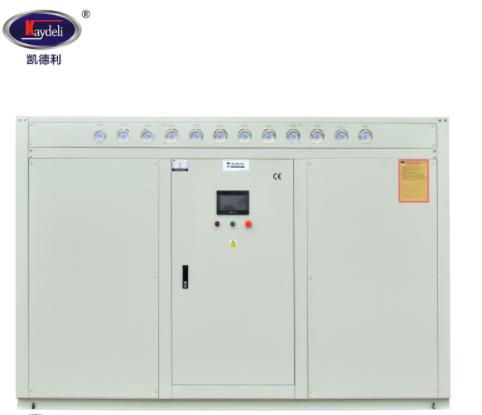Air-cooled chillers and water-cooled chillers are the two most common industrial chillers. Some people think that air-cooled chillers are good, and some people think that water-cooled chillers are good. So today, let’s talk about the main performance of chillers. The difference between a chiller and a water-cooled chiller, let’s take you to find out.
Basic configuration of industrial chiller: It is equipped with a single-chip control system, built-in compressor drier, filter and expansion valve, maintenance hand valve interface and other devices to ensure the reliable and safe operation of the machine and facilitate maintenance and repair.
The supporting equipment of the air-cooled chiller is the chilled water pump separator and the water collector, while the water-cooled chiller needs a special machine room cooling tower water collector and water separator , the same number of air-cooled chillers are cheaper than water-cooled chillers.

Since there is no need to install a cooling water tower, the air-cooled chiller is suitable for environments with poor impurities, so the air-cooled chiller is noisy.
The water-cooled chiller has low noise and is suitable for environments with better water quality due to the need to install a cooling water tower. If the water quality is poor, it is easy to block the water channel of the machine, resulting in greater economic losses.
Space Constraints:
Air-cooled: Ideal for areas with limited space, as they don't require a separate cooling tower.
Water-cooled: Suited for larger spaces with the availability of water for the cooling tower.
Outdoor vs. Indoor Installation:
Air-cooled: Suitable for outdoor installation, as they dissipate heat directly into the ambient air.
Water-cooled: Better for indoor spaces as they need a cooling tower, typically installed outdoors.
Climate Considerations:
Air-cooled: Perform efficiently in moderate climates, as they rely on ambient air for heat exchange.
Water-cooled: More consistent performance in varying climates, but may be affected by water temperature.
Since the heat exchange efficiency of water is much greater than that of air, the energy efficiency of water-cooled chillers is 300 to 500 kcal/h higher than that of air-cooled chillers.
Energy Efficiency:
Air-cooled: Generally less energy-efficient due to reliance on ambient air temperature.
Water-cooled: More energy-efficient in consistent climates, leveraging water's higher heat transfer capability.
Maintenance and Lifespan:
Air-cooled: Typically easier to maintain with fewer components, but may require more frequent cleaning.
Water-cooled: Requires regular maintenance of both chiller and cooling tower, but often has a longer lifespan.
Initial Cost and Operating Expenses:
Air-cooled: Lower initial cost and installation expenses, making them cost-effective for smaller applications.
Water-cooled: Higher upfront costs due to the need for a cooling tower but may result in lower operating expenses over time.
Noise Levels:
Air-cooled: Tends to be noisier as they rely on fans for heat dissipation.
Water-cooled: Generally quieter during operation, suitable for noise-sensitive environments.
Adaptability to Load Variations:
Air-cooled: Better for applications with varying loads as they respond quickly to changes.
Water-cooled: More stable performance but may be less responsive to sudden load fluctuations.

The overall power consumption of water-cooled chillers (including the power consumption of cooling water pumps and cooling tower fans) is about 25% lower than that of air-cooled chillers.
Because the heat transfer temperature difference of the condenser of the water-cooled chiller is generally 4°C-8°C, and the heat transfer temperature difference of the air-cooled chiller is generally 8°C-15°C, under the same outdoor ambient temperature, the water temperature of the cooling circulating water is higher than The outdoor air temperature, so the condensation temperature of the air-cooled unit in normal operation is much higher than that of the water-cooled unit, so that the air-cooled unit consumes more electricity than the water-cooled unit under the same cooling capacity.
Regarding the air-cooled chiller and the water-cooled chiller, the two types of chillers have their own characteristics and their own points. The small-sized chiller can be considered as an air-cooled chiller, which is economical and easy to install, while the large-sized chiller can be considered. The water-cooled chiller has good heat dissipation, stable function and lower maintenance cost.
By continuing to use the site you agree to our privacy policy Terms and Conditions.